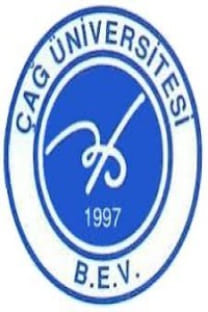KARAR DESTEK SİSTEMİ OLARAK “SİSTEM DİNAMİKLERİ YAKLAŞIMI”: BİR İŞLETMEDE KARAR VERME ÖRNEK OLAYI UYGULAMASI
Çalışmanın amacı, bir karar destek sistemi olarak “Sistem Dinamikleri Yaklaşımının” (system dynamics approach) yönetime ve yöneticilerin karar verme faaliyetine katkısını araştırmaktır. Çalışma kapsamında, büyük ölçekli uluslar arası bir işletmede geçmişte karşılaşılan ve çözümü için karar verilip uygulanan bir karar problemi ortaya konmuştur. Problemin tanımlanmasından sonra, bu problem karşısında işletmenin geleneksel karar verme yöntemlerini kullanarak; hangi kararları, hangi karar verme yaklaşımlarıyla, ne zaman ve hangi maliyetlerle aldığı ve bunun neticesinde örgütsel amaçları doğrultusunda hangi etkinlikteki sonuçlara ulaştığı incelenmiştir. Bunun yanında, incelenmiş olan geçmişteki karar problemine alternatif bir karar destek sistemi olarak sistem dinamikleri yaklaşımının uygulanmasıyla birlikte mevcut probleme ait bir sistem dinamikleri modeli oluşturulmuş, bu modele verilerin girilmesi ile birlikte model çalıştırılarak geleceğe ait simülasyonlar elde edilmiştir. Netice olarak,“geleneksel karar verme yaklaşımları” ile “sistem dinamikleri yaklaşımının” etkinlik açısından neticeleri üzerinde mukayeseler yapılmıştır
The main purpose of this study is to identify the contribution of “systems dynamics approach” as a decision support system to the management and decisionmaking activities in organizations. In this study a decision problem of an international enterprise in the past was described. Then, traditional decision making methods were applied to the problem and the results of the application were established. In the application, a system dynamics approach as a decision support system was applied to the same decision problem and the gaining of system dynamics approach were pointed out. In this second method; firstly a system dynamics model was built, the data were then applied to the model and simulation results were obtained. In each phase of the identification of the decision problem, system dynamics model was developed gradually. After gaining the results of the model, two methods were then compared with each other at the end of the research
___
Cooper, K. ; Steinhurst, W.; 1993; International System Dynamics Bibliography; Lincoln MA; System Dynamics Society; s. 145-176.
Griffin, L. ; Ragin, C. C.; 1994; “Formal Methods of Qualitative Analysis”; Sociological Methods and Research; 23(1); s. 33-56.
Kirkwood, C.; 1998; System Dynamics Methods: A Quick Introduction; Ventana Systems Inc.; USA; s. 43-71.
Morecroft, J.D.W.; 1994; Executive Knowledge, Models, and Learning. (içinde) J. Morecroft & J. Sterman (Eds.); Modeling for Learning Organizations (s. 3-28) Portland; OR: Productivity Press.
Sterman, J. D.; 1989; “Misperceptions of Feedback in Dynamic Decision Making”; Organizational Behavior and Human Decision Processes; 43; s. 301-335.
